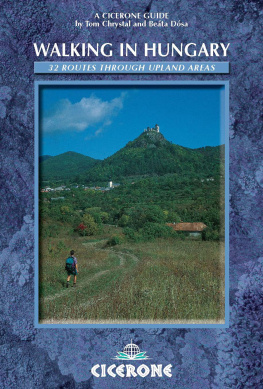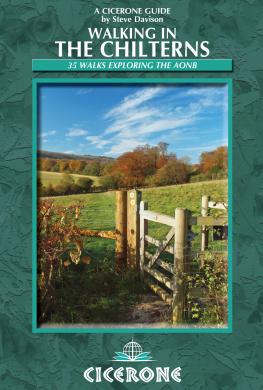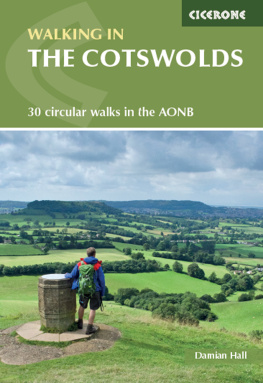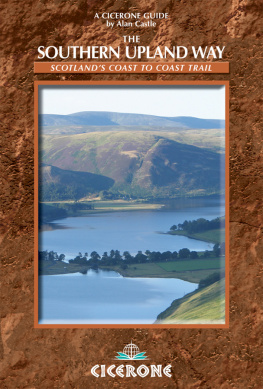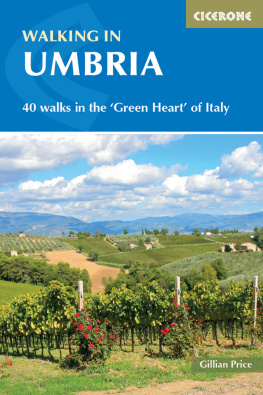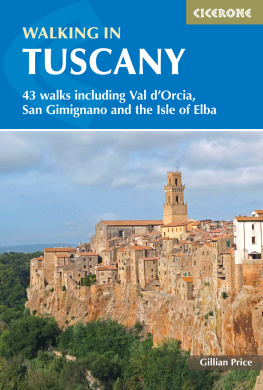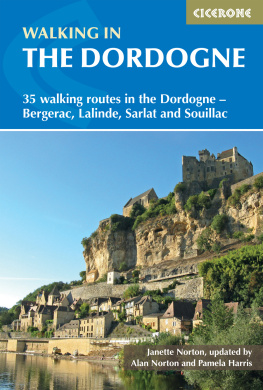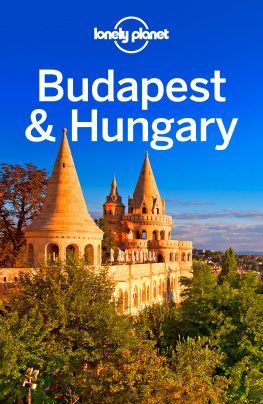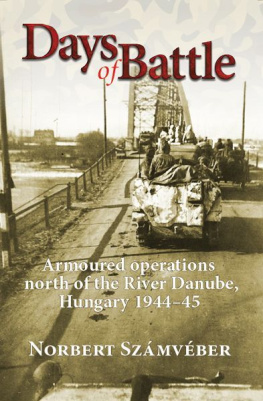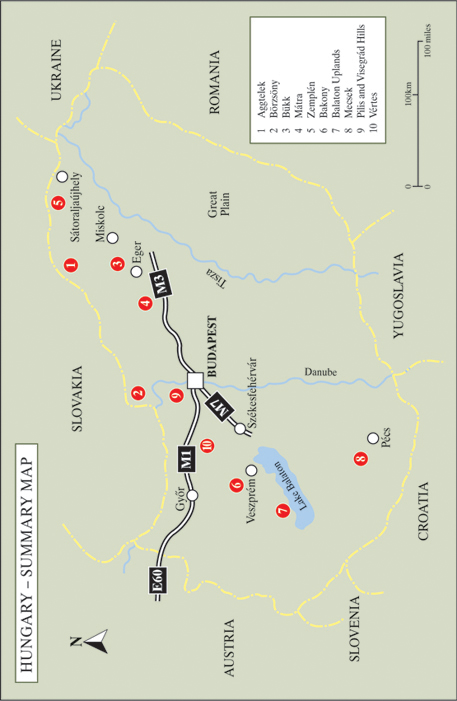About the Authors
Tom Chrystal was born in Huntly, north-east Scotland, and began walking in the eastern Grampians of his native Aberdeenshire. After leaving school he became a military bandsman, spending a year at the Royal Military School of Music. A career in the civil service followed with precious holidays spent walking in the Pyrenees. He took a year off work to visit mountain ranges in Alaska, Canada and Tasmania and went on to study social anthropology at the London School of Economics. Tom has walked in over 30 mountain and upland areas in 15 countries.

Beta Dsa was born in Mezkvesd in north-east Hungary and spent her childhood in the village of Tibolddarc on the edge of the Bkk National Park. Beta first experienced the joys of hill walking in the Bkk and Zempln while a member of the state youth movement or Pioneers. She attended Srospatak bilingual school and took a Masters degree in History of Theatre at the University of Veszprm. As a freelance translator and interpreter Beta has worked for Hungarian television and nongovernment organisations and now works for the British Council. Beta has walked in the Scottish Highlands and Islands, the English Lake District and Slovakian High Tatra.
WALKING IN HUNGARY
by
Tom Chrystal and Beta Dsa
2 POLICE SQUARE MILNTHORPE CUMBRIA LA7 7PY
www.cicerone.co.uk
Tom Chrystal and Beta Dsa 2003
ISBN 1 85284 352 7
A catalogue record for this book is available from the British Library.
Acknowledgements
This guide would have foundered without the advice and experience of many people. Not all are mentioned here but we would like to thank in particular Lszl Kalmr and Andrs Dorogi of the Magyar Termszetbart Szvetsg who helped to untangle the confusing strands of the history of walking in Hungary. Thanks to the following we gained much unpublished local knowledge: Zsolt Bacs for the Aggtelek National Park; the Bkki family of Hollhza for the Zempln; Zoltn Rpszky and the Holocn Egyeslet for the Bkk National Park; and Sndor Dsa on the workings of agricultural co-operatives. We would also like to thank Mnika Horvth for her helpful comments on Hungarian history; Szabolcs Serfz for his advice and encouragement; and Erika Komon for bringing our attention to Hungarys challenge walk movement. In addition, the hospitality of Ferenc and Anasztzia Lippert and their son Ferike made the long hard walks around the Bakony worth every kilometre. For their kindness, many thanks to the staff of the Mr-csrda; va of Porva-Csesznek turistahz; the Flrins of Boldogkvralja railway halt; and Tibor Bielek. Finally, we thank Joshua Shewan for his patience and the use of his facilities and the Dsa family who provided moral support and countless memorable lunches.
Advice to Readers
Readers are advised that while every effort is taken by the authors to ensure the accuracy of this guidebook, changes can occur which may affect the contents. It is advisable to check locally on transport, accommodation, shops, etc, but even rights of way can be altered. The publisher would welcome notes of any such changes.
Front cover: Approaching Fzr Castle, Zempln, Walk 16
CONTENTS
INTRODUCTION
When you go out into the big forest
Look not behind you
Lest your heart be heavy
As you set foot in a foreign land.
(Hungarian folk song)
The Highlands of Hungary
Every nation projects an image of its landscape to the outside world. In Hungary it is the Great Plain, and most visitors to Hungary are unaware that large areas of the country are covered in highlands and rolling hills with deep wooded valleys, high karst meadows and rocky viewpoints. A walk along the ridges of the Mtra and the Brzsny or the limestone outcrops of the Bkk will dispel the myth that Hungary is a flat country. Hungarys highland chain of humpback mountains, limestone plateaux and buttes was formed by a combination of volcanic activity and the raising of tropical seabed sediments. There are about 13 000km (8025 miles) of tracks and trails in the hills. For centuries they have been used by medieval miners, Turkish janissaries (soldiers), pillaging Hussites, herders, beekeepers, charcoal-burners and foundry workers. These ancient highways are now a network of walking paths with a system of waymarks first set up in the nineteenth century.
How the Guide is Organised
This introductory chapter provides practical information about getting to Hungary and what to do on arrival. There is advice on the public transport network, accommodation, maps, the waymarking system and access. Finally, there are introductions to the natural, social and walking history of the hills.
The routes are set out in the guide by region. For simplicitys sake the highland areas of Hungary are divided into two main regions: Northern Hungary (north and east of the Danube) including the Aggtelek karst, Brzsny, Mtra, Bkk and Zempln; and Transdanubia (west of the Danube) including the Bakony, Balaton Uplands, Buda Hills, Mecsek, Pilis and Vrtes. The summary map of Hungary shows the approximate position of each region.
All the major highland groups of Hungary are described and each region has an introduction including a brief description of the hills and their position, regional history, useful information about how to get there, and points of interest on or near the walks. Individual route instructions provide a short facts section: a summary of the route; walking distance; which map to buy; local public transport; refreshment stops if any; and a brief description of the type of walking to be expected. Distances are initially calculated in kilometres. Miles are given in brackets with the conversion roughly rounded to the nearest half mile. Alternative routes, diversions and quick escapes are clearly demarcated from the main description. Timings are not given as experience suggests that they depend on the fitness of the walker. The walks are not aimed at the incredibly fit, and even the longest route should take no longer than a day at moderate speed. Accompanying the route information is a route map. Every walk stands alone but a few can be linked up to lengthen the route. Hungarys rich and complex history ensures that the walking passes many interesting features from fortress ruins to beehive stones. Points of interest listed in the introduction to each regional section are highlighted in bold in the main text.
Finally, the appendices supply an introduction to the Hungarian language a list of simple words and phrases to help the English speaker get by in rural Hungary; a glossary to aid Hungarian walking map interpretation; and a list of useful addresses.
Getting to Hungary
Visas
British visitors to Hungary require a valid passport with at least six months before expiry. Nationals of selected European countries can enter with an identity card check with the Hungarian embassy for an up-to-date list. Citizens of the European Union do not require a visa for stays of up to six months but citizens of the USA, Canada, South Africa and New Zealand can only stay up to 90 days without an extension. Hungarian border guards are generally not difficult to deal with if you fulfil the above criteria but expect them to be suspicious if you cross the border on foot carrying a backpack. Visa requirements change from time to time always check the latest position with the Hungarian embassy before making travel arrangements.
Next page
